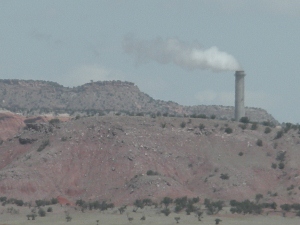My purpose in writing on Air Quality Matters blog is to try to bring about greater public awareness of matters dealing with air quality. For me, it’s all about doing something constructive for the community. If I can make a positive difference in the life of just one person, then it’s worth the effort that I put in.

“Getting the picture?”
Getting and keeping our air clean? That’s a challenge I’m willing to take on. It’s worth fighting for and working toward.
The “Of clouded views and not losing perspective” op-ed was posted soon after the posting of the “Horrendous air or no let the Friday night football games begin” blog entry which was posted on Nov. 8th.
In the latter in the introductory paragraph I challenged: “I am fast reminded of the hit song: ‘Nothing’s Gonna Stop Us Now.’ If this song is indeed about unyielding resolve, then it seems more than appropriate, as it would appear the overarching Friday night sentiment, unhealthy Fresno air or no, was: ‘Football: bring it on!’ Not even the air, as filthy as it was, was going to put a damper on these activities, apparently. I ask: Does the notion: ‘It is best to err on the side of caution’ mean anything to anyone, anymore, I wonder?”
![Fireplace_Burning[1]](https://alankandel.scienceblog.com/files/2012/12/Fireplace_Burning1-300x225.jpg)
It is astonishing to me that games were even allowed to proceed. In fact, that same day, one Clovis Unified School District cross-country coach, Bill Buettner, as reported on in The Fresno Bee, stressed that “… football games will go on as planned, although he had indicated that there was modified cross-country practice.” It was not expressed what that modified practice consisted of, however. To allow outdoor aerobic activity with the air as unhealthy as it was, I have to wonder what the thinking behind the decision to go ahead with Friday evening football play was.
What I can’t help but noticing about the past three Novembers (2012, 2013 and 2014) in California’s San Joaquin Valley is that the number of days that the daily National Ambient Air Quality Standard for fine particulate matter of 35 micrograms per cubic meter of air was breached was in double digits. This compares to the times the daily federal PM 2.5 health standard was exceeded for years 2013, 2014 and 2015 in February.
California Environmental Protection Agency Air Resources Board data shows that for Feb. 2013 and Feb. 2014, the number of times the federal standard was exceeded was held to single digits. For Feb. 2015, it was an altogether different story. Despite the number of daily federal PM 2.5 threshold exceedances – 11, the highest reading was 49.3 micrograms. Now contrast that with Nov. 2014’s 14, the highest reading according to ARB data was 107.2 micrograms, this occurring on Nov. 8th.
Well, being in the Valley that high school football is an autumn sport and played outdoors when air is oftentimes unhealthy, and being that high school basketball is an indoor sport played mostly in the early-to-mid-winter months when air quality seems to be somewhat-to-far improved, I’m thinking at least on a trial basis, to maybe interchange the times of the year the two sports are played.
As part of the air district’s on-air public service announcement (PSA) campaigning, air district representatives encourage Valley denizens to “Make ONE Change”1 in an effort to help improve the quality of the Valley’s air. One change!
The football/basketball swap could in fact be one such change for the better concerning the health of Valley high school athletes. I’m not going to sugar coat this by saying that making the switch would be easy. In fact, it is just the opposite. The difficulty would come, of course, in the articulation of high school programs across the state. But, such change could be to the collective advantage of all interested parties as games in the Valley don’t just involve Valley teams exclusively.
Of course, looking into this matter much more deeply is in my mind’s eye justified, especially if it produces favorable results. To me, it definitely seems like an idea worth further investigation.
Accuse me of having my head in the clouds if you must, but indoor sports scheduled for times when outdoor air quality is problematic to me makes far more sense than scheduling outdoor sports during those very same times and vice versa. Not only could following this practice fare much better health-wise for the athletes but also for the spectators attending such sporting events.
Of course it would just be easier, presumably, to cancel games when pollution reaches unhealthful levels. As viable and sensible as that sounds, though, I’m not going to hold my breath.
Notes
- San Joaquin Valley Air Pollution Control District, “Outreach & Communications” section of the “Report to the Community 2013-14 Edition,” pp. 41 and 42.
– Alan Kandel